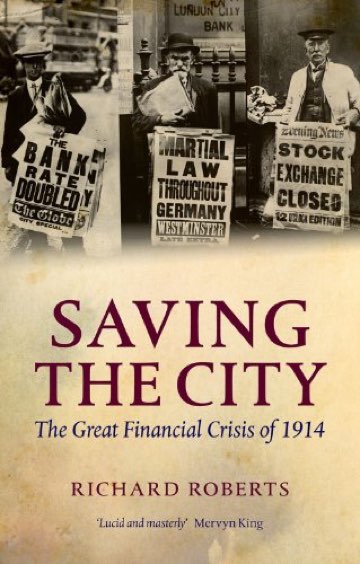Saving The City
by Richard Roberts
A fascinating and detailed study of the financial crisis that struck London in 1914 and engulfed the world. World Trade in 1914 was highly globalized – far more so than at any time before, and world trade only surpassed this mark recently. Back then, the Pound Sterling was the international reference currency, all major currencies were pegged explicitly to gold and implicitly to sterling, and trade was based on bills that could be settled for sterling in London and subsequently converted at the Bank of England to gold. (In practice, settled bills went into accounts and gold was only shipped for arbitrage.)
The problem was that, as war approached, everyone wanted safety, and so everyone bought up London bills. There were soon no bills available, and that meant if you wanted to make a routine transaction, like paying for a shipload of shirts you’d ordered, you couldn’t: you could have plenty of money but you couldn’t get any of the de facto international currency because there wasn’t any to get.
In the end, ways were found to unwind the crisis and to get things going again, and the memory of the near-disaster was largely lost in the disasters that followed. This is a complex and technical story with some interesting characters, and Roberts tells it skillfully.
